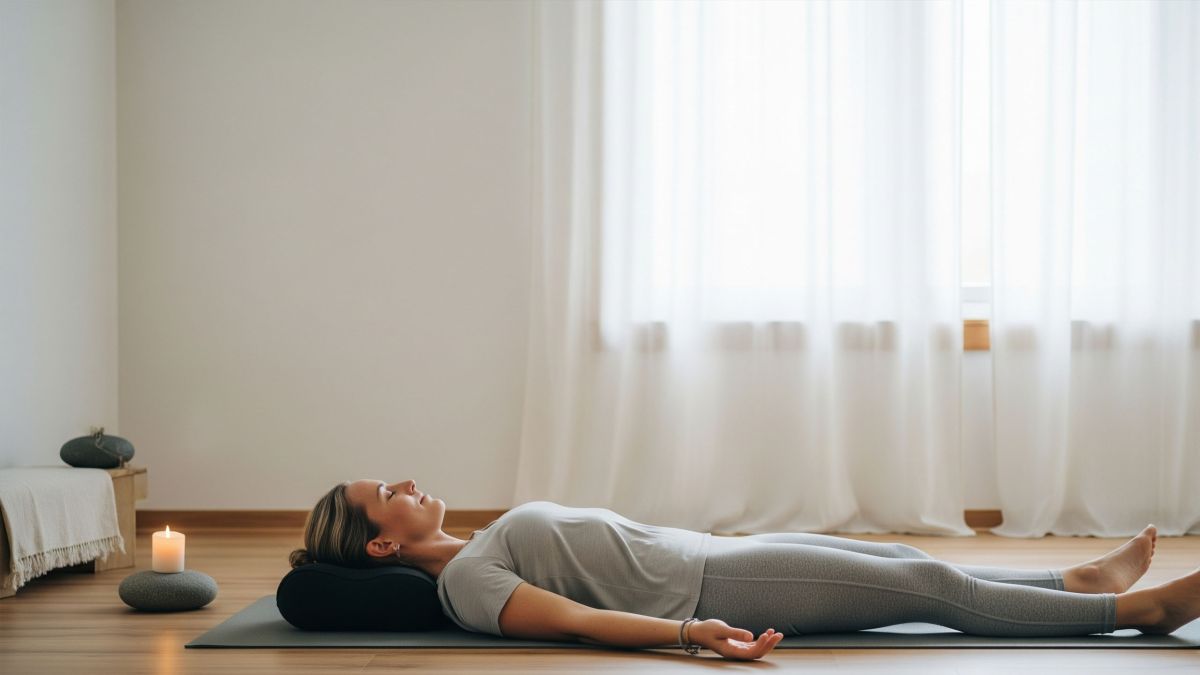Body Scan Meditation: How to Tune In and Let Go

In the constant flow of daily life, it’s common to feel disconnected from our physical selves. We often live in our thoughts, planning, worrying, and remembering, while paying little attention to the body that carries us through the day. The body scan meditation is a foundational mindfulness practice designed to rebuild this connection. It offers a structured way to pay attention to your body, notice physical sensations, and cultivate a sense of calm.
What is a Body Scan Meditation?
A body scan meditation is a technique that involves systematically guiding your attention through your entire body, from your toes to the top of your head. The goal is not to change or fix anything you find, but simply to notice the sensations that are present in each part. You might observe feelings of warmth, tingling, coolness, pressure, or contact. You might also notice areas where there is little or no sensation at all.
The practice encourages an attitude of curiosity and acceptance. It’s an exercise in paying attention without judgment. By observing your body in this way, you can learn to recognize physical tension you might not have been aware of and gently allow it to soften.
The Benefits of a Regular Practice
Incorporating body scan meditation into your routine can be associated with several positive outcomes. Individuals who practice it regularly often report:
-
Reduced Stress: The practice can help soothe the nervous system, shifting the body from a state of stress to one of relaxation.
-
Greater Body Awareness: By regularly checking in with your body, you become more attuned to its subtle signals, such as the first signs of tension, hunger, or fatigue.
-
Improved Sleep: A body scan performed before bed can help quiet a racing mind, making it easier to fall asleep.
-
A Different Relationship with Discomfort: For those experiencing physical discomfort, the body scan can help in observing the sensation without the layer of mental reaction that often magnifies it. This can change one’s relationship with chronic pain or discomfort.
How to Practice: A Step-by-Step Guide
This practice can be done lying down on a bed, mat, or couch, or sitting upright in a chair if that is more comfortable for you. The key is to be in a position where your body can be as relaxed as possible.
-
Settle In. Find your comfortable position. If you are lying down, let your arms rest by your sides with palms facing up or down, and let your feet fall naturally apart. Gently close your eyes or lower your gaze.
-
Begin with Your Breath. Start by bringing your attention to your breath. Notice the feeling of the air moving in and out of your body. Take a few slow, deep breaths to help you settle into the present moment.
-
Start the Scan. Bring your focus to the toes of your left foot. Notice any sensations present—perhaps warmth from a sock, coolness in the air, or the feeling of contact between the toes. There is no need to look for anything special; just notice what is there.
-
Move Systematically. Slowly, guide your attention from your toes to the sole of your left foot, your heel, and the top of your foot. Then, continue upward to your ankle, shin, calf, and knee. Linger on each area for a few breaths. Continue up through your left thigh and hip.
-
Switch Sides. When you have scanned your entire left leg, gently shift your attention to the toes of your right foot and repeat the same process, moving slowly up your right leg.
-
Scan the Torso. Guide your awareness to your pelvic region, then your abdomen and lower back. Notice the gentle rise and fall of your belly with each breath. Continue up to your chest and upper back, including your shoulder blades.
-
Scan the Arms and Hands. Bring your attention to the fingers of your left hand. Scan the palm, the back of the hand, the wrist, and move up the forearm and upper arm to your left shoulder. Then, repeat the process with your right hand and arm.
-
Scan the Neck and Head. Move your focus to your neck and throat. Then, bring awareness to your jaw, chin, mouth, cheeks, ears, nose, and eyes. Notice the sensations around your forehead and scalp, all the way to the very top of your head.
-
Rest in Full-Body Awareness. After scanning each individual part, take a few moments to feel your body as a whole. Notice the complete sense of your physical self, breathing from moment to moment.
-
Conclude the Practice. When you are ready, slowly bring your awareness back to the room around you. Wiggle your fingers and toes gently. Take a final, conscious breath, and when you feel prepared, slowly open your eyes.
Quick Guide: The Body Scan Sequence
| Body Region | Focus / Intention |
|---|---|
| 1. Preparation | Get comfortable and bring awareness to your breath. |
| 2. Left & Right Leg | Scan from the toes up to the hip on each side, noticing any sensations. |
| 3. Torso | Move awareness through the pelvis, abdomen, chest, and back. |
| 4. Left & Right Arm | Scan from the fingers up to the shoulder on each side. |
| 5. Neck & Head | Bring gentle attention to the neck, throat, jaw, face, and scalp. |
| 6. Conclusion | Rest in full-body awareness before gently returning to your surroundings. |
Tips for Your Practice
-
Start Short. If a 30-minute scan feels intimidating, begin with just 5 or 10 minutes. You can always increase the duration as you become more comfortable.
-
Expect Your Mind to Wander. It is completely normal for your mind to drift to thoughts, plans, or sounds. When you notice your attention has strayed, gently acknowledge it without criticism and guide it back to the part of the body you were focusing on.
-
Use a Guide. Especially when you're starting, following a recorded guided meditation can be very helpful. There are many available online and through various apps.
-
Let Go of Expectations. Every session will be different. Some days you may feel relaxed, and other days you may feel restless. The intention is simply to practice paying attention, not to achieve a specific outcome.
The body scan meditation is a simple yet profound way to connect with your body and quiet your mind. It is a quiet act of self-care, offering a chance to simply be with yourself, just as you are.
Disclaimer: The articles and information provided by the Vagina Institute are for informational and educational purposes only. This content is not intended to be a substitute for professional medical advice, diagnosis, or treatment. Always seek the advice of your physician or another qualified health provider with any questions you may have regarding a medical condition.


 English
English  Deutsch
Deutsch  Español
Español  Français
Français 

